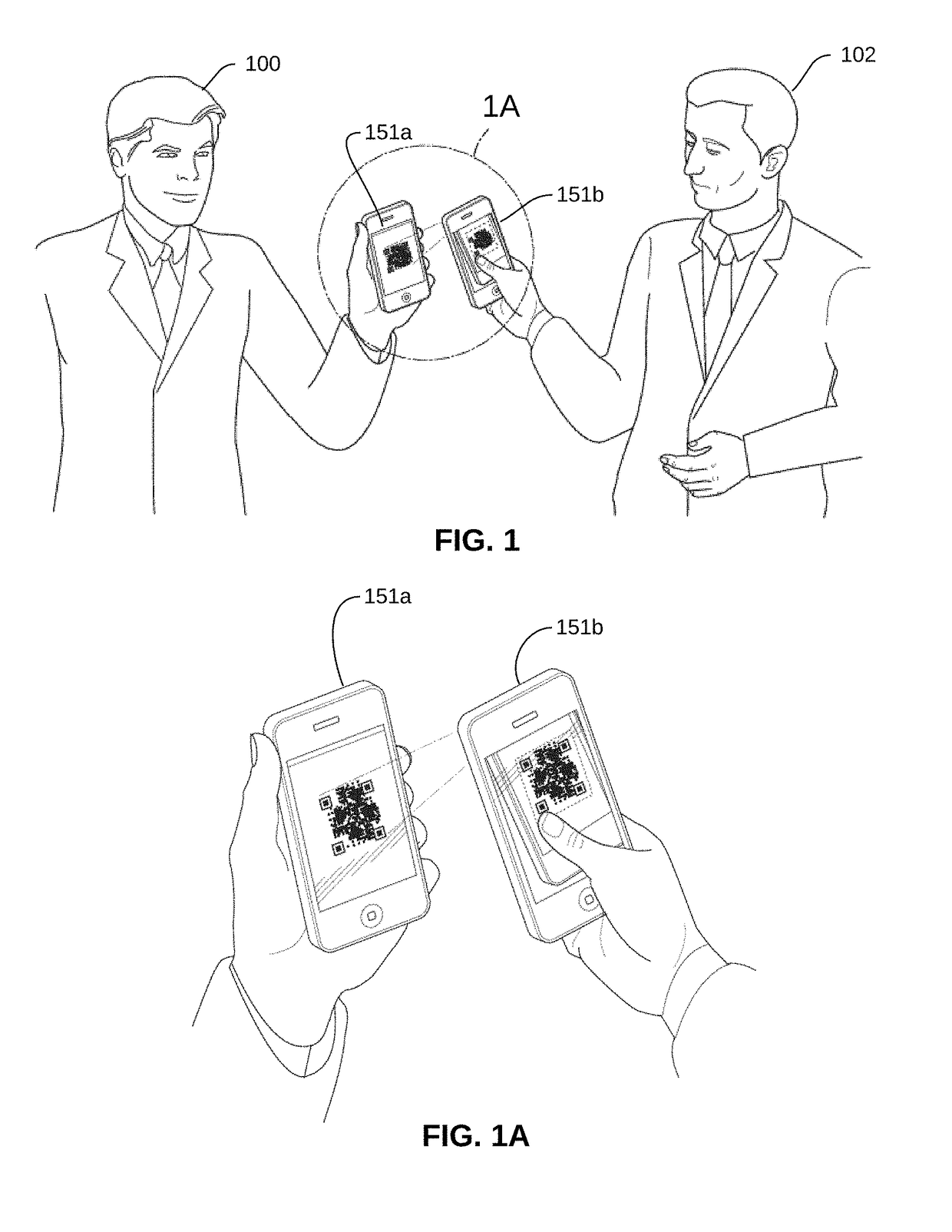System and method for intelligently managing and distributing electronic business cards
a technology of intelligent management and electronic business cards, applied in the direction of instruments, transmission, electromagnetic radiation sensing, etc., to achieve the effect of improving the understanding of customers, facilitating sharing, and positively influencing the conversion rate of sales
- Summary
- Abstract
- Description
- Claims
- Application Information
AI Technical Summary
Benefits of technology
Problems solved by technology
Method used
Image
Examples
Embodiment Construction
[0039]The invention disclosed provides the means for saving a business card or contact information globally and once so that people can access the information from anywhere. Because this method and systems allow to save the data only once, it prevents data from being inconsistent.
[0040]FIG. 1 depicts an environmental view where a Card Owner 100 is delivering their Electronic Business Card 400 to a Card Recipient 102. The illustration depicts an embodiment of the invention where the Card Owner 100 holds the client device, in this instance a mobile phone, while displaying a Business Card Token 405 that encapsulates his Electronic Business Card 400. In the embodiment of the invention shown, an image of the Card Owner 100's Business Card Token 405 is captured by the Client Device 150 of the Card Recipient 102. The software application running on the Client Device 150 of the Card Recipient 102 connects with the Card Management System 500 over a wired or wireless Network 140 and presents ...
PUM
 Login to View More
Login to View More Abstract
Description
Claims
Application Information
 Login to View More
Login to View More - R&D
- Intellectual Property
- Life Sciences
- Materials
- Tech Scout
- Unparalleled Data Quality
- Higher Quality Content
- 60% Fewer Hallucinations
Browse by: Latest US Patents, China's latest patents, Technical Efficacy Thesaurus, Application Domain, Technology Topic, Popular Technical Reports.
© 2025 PatSnap. All rights reserved.Legal|Privacy policy|Modern Slavery Act Transparency Statement|Sitemap|About US| Contact US: help@patsnap.com



